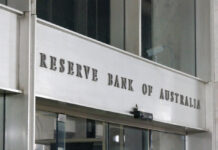- Overnight rate held at 0.25%
- QE unchanged at $4 billion per week
- Expect QE taper in April
As expected, the Bank of Canada left its key policies unchanged today, holding the overnight rate steady at 0.25% and government bond purchases at $4 billion per week. It also reiterated its forward guidance to keep the overnight rate at its current level until the economy returns to full capacity, which in its January forecast wasn’t until 2023. The BoC acknowledged upside risks to its growth forecasts as the economy is “proving to be more resilient than anticipated” during the second wave. It noted Q1 growth is likely to positive rather than the contraction that was assumed in January We recently revised our 2021 GDP growth forecast to 6.3% from 4.9% previously; the BoC’s projection was 4.0% in January. We see the Canadian economy returning to full capacity in 2022, sooner than the central bank has assumed. That leaves us expecting a rate hike in the second half of 2022 which markets are currently pricing in.
Well before that first rate hike, we think the BoC will taper its QE program in April. In January the bank indicated it would reduce the pace of asset purchases if growth was in line with expectations. It didn’t sharpen that guidance today but given upside surprises in GDP growth we think an April taper (from $4 billion to $3 billion per week) is in order. The impact of that announcement on financial conditions should be modest given the BoC’s guidance on tapering and the fact that reduced purchases will also coincide with reduced new issuance by the government in the upcoming fiscal year.
Amid improving growth prospects and rising inflation expectations, government bond yields have jumped higher this year from historically low levels. While the BoC hasn’t expressed discomfort with that increase (which still leaves financial conditions highly accommodative) it was clear in today’s statement that the central bank doesn’t want to add to selling pressure. It emphasized still sizeable economic slack and “a great deal of uncertainty” around the evolution of the virus and the strength of the economic recovery. The statement also reiterated points from Governor Macklem’s February speech, pointing out that “low-wage workers, young people and women have borne the brunt of the job losses.” The BoC’s spotlight on the unequal impacts of the pandemic and recession adds a dovish tone to the statement as it could be interpreted as a signal that the central bank will keep rates low for longer to ensure improving economic conditions and better labour market outcomes are shared by those hardest hit.
The BoC noted inflation will rise to the top of its 1-3% target band in the near term but expressed limited concern about sustained price pressure. We expect the BoC will look through a largely energy-driven increase in headline inflation in Q2, but note that risks are tilted to the upside as the economy re-opens with the potential for demand to outpace supply in some sectors. Our base case, though, assumes headline inflation will slip back below 2% by the end of this year and that underlying inflation won’t be sustained at the BoC’s 2% target until 2022.













